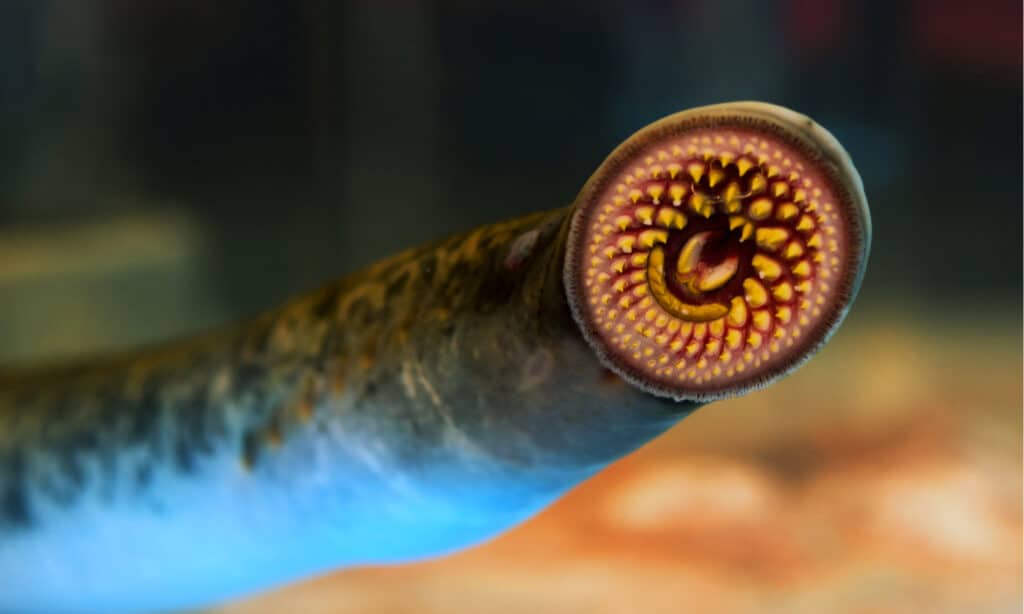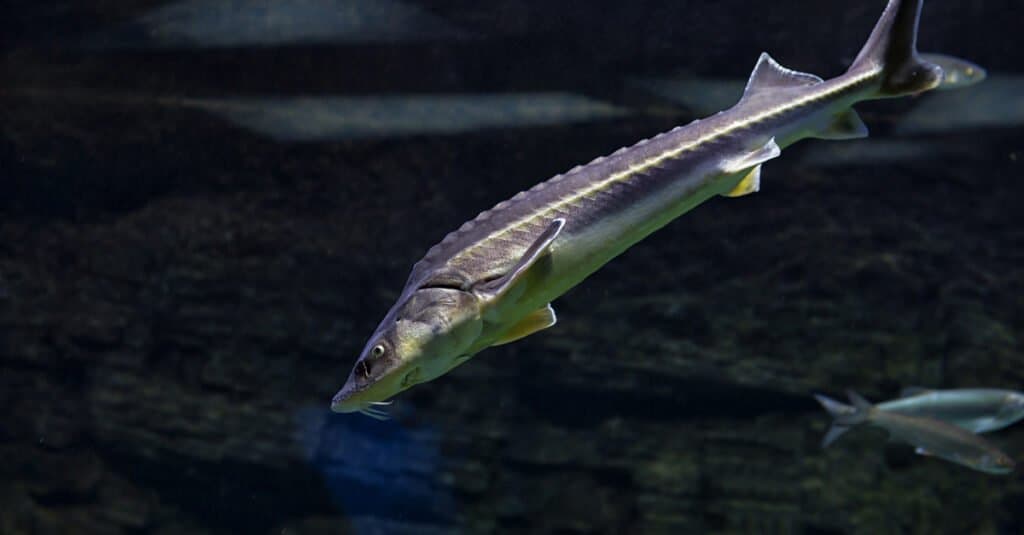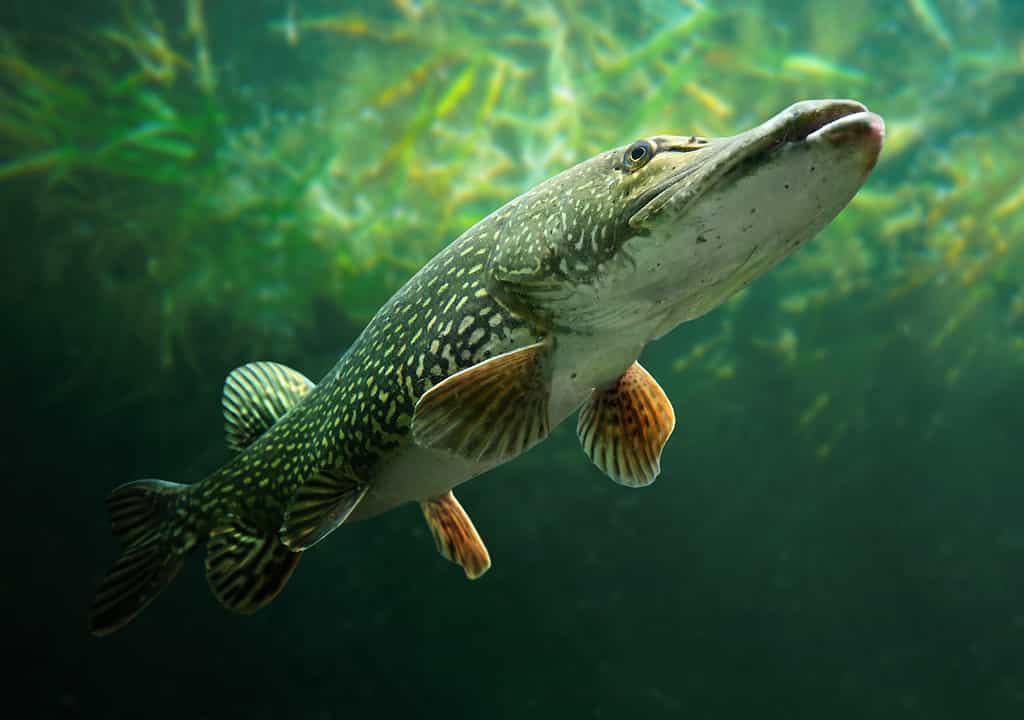Dangerous animals get a lot of buzz. However, there aren’t actually that many dangerous animals in Wisconsin’s rivers or lakes. While there are some animals that may potentially harm swimmers, this is a very rare occurrence. None of these animals seek out people to harm. Typically, these snakes and fish only strike when threatened by humans. Animals are often quite scared of people (and for a good reason). It’s best to respect wildlife and keep a safe distance.
With that said, five potentially dangerous animals can be found in Wisconsin’s waters. By the end of this article, you’ll know all about them.
Are Wisconsin’s Lakes and Rivers Dangerous?
There are dangerous animals living in just about every lake. Therefore, it’s to be expected that no lake or river is completely safe. That said, Wisconsin’s dangerous animals aren’t all that deadly. Swimmers are at a much higher risk from the water itself than the animals that live there.
Most animals in Wisconsin’s waters aren’t aggressive or harmful unless provoked. Therefore, keeping a safe distance is important. It’s still important to know exactly what animals are around when you plunge into the water, though. Here are some animals that you make want to keep an eye out for.
A List of the Most Dangerous Animals in Wisconsin’s Lakes and Rivers
Several species live inside Wisconsin’s waterways that may be potentially dangerous to humans. Let’s take a look at them.
1. Sea Lamprey
Sea Lamprey are parasitic fish that look a bit like eels. They have a circle of teeth in their mouth, which lets them attach to their prey. They also have a very rough tongue that lets them “lick” a hole in their prey.
These fish feed on blood and fluids from their host, which they harvest by latching on and “licking” them. They can attach to very large fish and aren’t picky about who they choose. Luckily, they’re rarely interested in people, as we don’t spend much time in the water and usually don’t go very deep.
However, if they do attach to a person, they can leave painful wounds.
Despite their name, they live in lakes and rivers, as well as the ocean.
In fact, this species is invasive to the Great Lakes, though its natural range is the Atlantic Ocean. The eel-like fish migrates to freshwater rivers and streams to spawn. Sometimes, they end up in the Great Lakes and decide to stay there.
In the Great Lakes, the Sea Lamprey can cause serious damage to the native fish population and fishing industry. For this reason, the local government often attempts to control them with barriers, traps, lampricides, and pheromones. These methods attempt to reduce the number of Sea Lamprey in the area to protect the native population.
The Sea Lamprey is an ancient fish. It’s believed that they’ve been around for 340 million years, surviving several major extinction events. They have a skeleton made of cartilage and no jaws, fins, or scales – so they are a rather odd fish.
This fish can grow up to 47 inches long and weigh up to 5 pounds. They have an olive or yellowish color with black markings.

Sea lamprey are parasitic fish that look a bit like eels.
©Gena Melendrez/Shutterstock.com
2. Snakehead
Snakeheads are rather unusual fish, as well. They belong to the family Channidae and are native to Africa. However, they have been introduced to several other regions as an invasive species, including Wisconsin.
They have a long, cylindrical body with a flat head and large mouth. As predatory fish, they have very large teeth that can inflict serious pain if they get a hold of you. While they don’t typically seek humans out, they will bite if handled. They can reach up to 15 pounds, allowing them to leave some pretty big wounds.
In their natural habitat, these fish feed on zooplankton, insects, mollusks, crustaceans, amphibians, reptiles, birds, and other fish. They have a huge appetite and can eat up to 40% of their body weight in one day.
In areas where they’re invasive, they may prey on a range of different native species. As you’d imagine, this harms native populations and can even push some species to extinction.
The snakehead fish can breathe air via a special organ that is located above its gills. This ability allows them to survive in low-oxygen waters and tidepools where other species would perish. They can even live on land for serval days as long as they stay moist. In addition, they’re known for their ability to “walk” on land using their pectoral fins.
The species is a prolific breeder. They can spawn several times a year, and females can lay up to 100,000 eggs at a time. Therefore, they can easily overtake an area outside of their natural range.
After being born, the babies stay with their parents for several weeks before dispersing.
This species has been introduced in several states after being found in Maryland in 2002. Many control methods have been tried, including physical removal and chemical treatments. However, these have yet to reduce or eliminate the fish from the area.

As predatory fish, snakeheads have very large teeth that can inflict serious pain if they get a hold of you.
©bigjom jom/Shutterstock.com
3. Lake Sturgeon
The lake sturgeon is found in many parts of the United States, including the Great Lakes, Mississippi River, and other rivers.
They’re one of the largest fish in North America, growing up to 200 pounds. They can live for up to 150 years, as well, making them one of the longest-lived fish in the area. However, most only live to around 50 to 80 years. They don’t reach sexual maturity until 15 to 25 years old.
They have a skeleton made out of cartilage and a row of bony plates. Their snout has four whisker-like barbels that they use to locate food. Their mouth is completely toothless. They use it to suck up prey from the lake floor like a vacuum. While they can feed on many different species, they prefer snails, crustaceans, insects, mussels, and small fish.
This ancient fish has existed for over 200 million years. It’s closely related to the dinosaurs and has changed very little over the past few millennia.
These fish are only dangerous to people due to their larger size. They can jump up and hit people in boats accidentally. They have no teeth, so biting isn’t a worry.

Lake
sturgeon
is also known as a living fossil.
©Galina Savina/Shutterstock.com
4. Northern Pike
The northern pike is a large, predatory fish that’s native to North America and Eurasia. They inhabit many of the lakes and rivers on these continents, making them more widely spread than most fish. They prefer places with abundant vegetation and prey.
These voracious predators prefer to feed on fish, frogs, mice, ducklings, and other small animals. Their long, slender body is olive-green with yellowish spots. They can grow up to 63 pounds.
Northern pike are ambush predators that lay in wait by rocks or weeds before striking any prey that comes nearby. They can swim up to 10 mph and jump out of the water to catch flying insects or birds.
These fish can tolerate low oxygen levels better than other fish. They can even survive in brackish water.
Mostly, these fish are solitary and only come together for spawning. A female can lay up to 100,000 eggs at a time – usually in shallow water with lots of vegetation. The eggs hatch after one to two weeks. The young pike grow quickly and reach sexual maturity in three to five years.
The northern pike is a game fish that attracts many anglers. It has a mild flavor that’s loved by many, and its size and strength make it a fun catch. However, it is sensitive to overfishing, pollution, and habitat loss. It’s considered vulnerable in some parts of its range.

The northern pike is a large, predatory fish that’s native to North America and Eurasia.
©iStock.com/abadonian
5. Rattlesnakes
Rattlesnakes don’t technically live in the water. However, they can live near wetlands and rivers. There are two species of rattlesnake that live in Wisconsin: the timber rattler and the Eastern Massasauga.
Rattlesnakes have a rattle at the end of their tail that they use to warn potential predators to stay away. When they’re frightened, they’ll typically use this tail instead of sticking – which is good news for us. Their rattle is made from hollow segments of keratin that interlock, creating the buzzing sound rattlesnakes are so famous for.
As pit vipers, rattlesnakes have heat-sensing organs on their head. These help them locate their warm-blooded prey in the dark. They also have great vision and can detect vibrations through their jawbone. Typically, they feed on rodents, birds, lizards, frogs, and other small animals.
Sadly, rattlesnakes are venomous. They have hollow fangs they can use to inject venom into their prey (or predators). This venom is a mix of enzymes and toxins that causes a range of symptoms, including swelling, pain, bleeding, tissue damage, and death. The exact symptoms depend on the species and situation.
Unlike many snakes, rattlesnakes are ovoviviparous. In other words, they give birth to live young that develop inside eggs within the mother’s body. The female can give birth to up to 25 offspring at a time.
These offspring have tiny rattles and venom glands ready to go. They’re independent from birth and don’t receive any care from their parents.

There are two species of rattlesnake that live in Wisconsin: the timber rattler and the Eastern Massasauga (pictured).
©Ryan M. Bolton/Shutterstock.com
Summary of the 6 Most Dangerous Animals in Wisconsin
Here’s a list of animals you need to keep an eye out for when on Wisconsin’s rivers and lakes.
| Rank | Dangerous Animal |
|---|---|
| 1 | Sea Lamprey |
| 2 | Snakehead |
| 3 | Lake Sturgeon |
| 4 | Northern Pike |
| 5 | Rattlesnakes |
The photo featured at the top of this post is © iStock.com/NajaShots
Thank you for reading! Have some feedback for us? Contact the AZ Animals editorial team.






